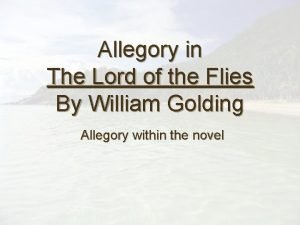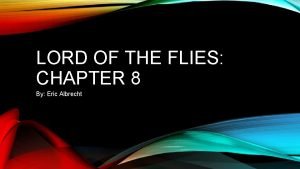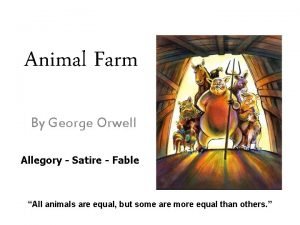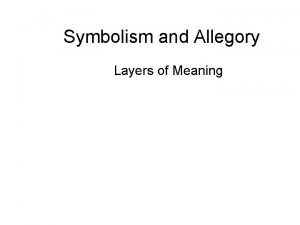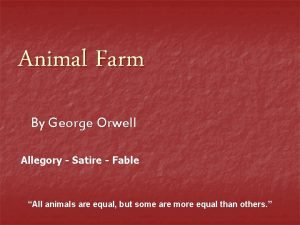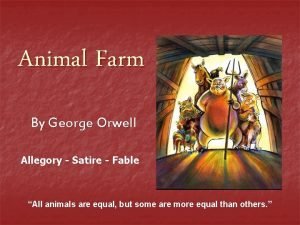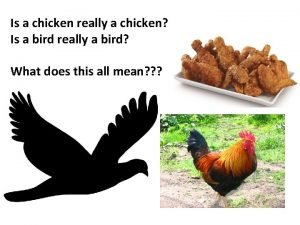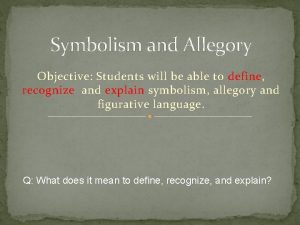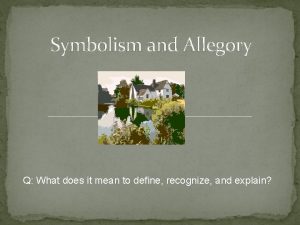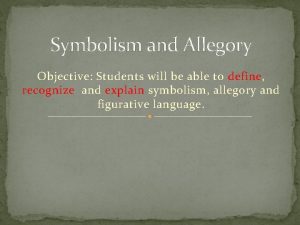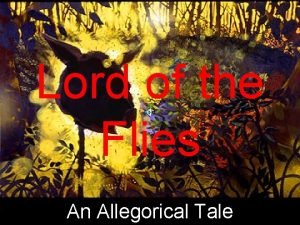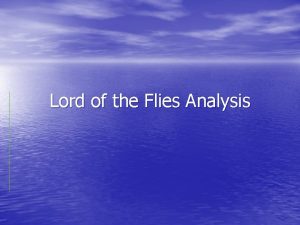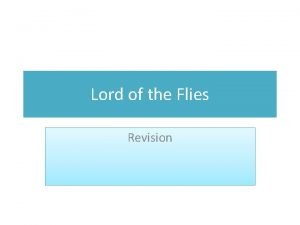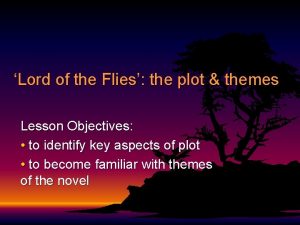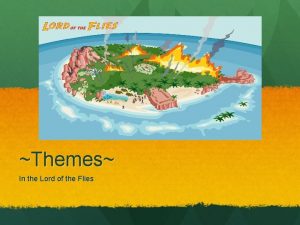Allegorical Themes in Lord of the Flies Mr










- Slides: 10

Allegorical Themes in Lord of the Flies Mr. Helton’s English IV

Overall “It was simply what seemed sensible for me to write after the war when everyone was thanking God they weren’t Nazis. I’d seen enough to realize that every single one of us could be Nazis. ” -- William Golding on why he wrote The Lord of the Flies • While on the surface Lord of the Flies is a pretty straightforward tale (and even at times a boring one) about British boys on an island, there is actually a lot going on under the surface of the book • Lord of the Flies is actually an allegorical tale based on lots of Biblical elements to discuss how mankind is inherently (and sometimes, innocently) evil.

The Island “This is a good island. ” –Ralph • The island is almost described as a tropical paradise. It is warm, has clean water, lots of food, and is almost primitive in the same way the world was primitive before human beings and civilization. • The island is an allegory for the Garden of Eden in the Book of Genesis.

The Beastie “Now the serpent was more crafty than any of the wild animals the Lord God had made. ” –Genesis, 3: 1 • The “beastie” is described as a “snake-like thing” and immediately the boys become scared of it. This fear is only going to get worse. • As they have more experiences with the “beastie, ” the reader begins to see more of the boys’ true natures. • In the Bible, the serpent of the Adam and Eve story tempts Adam and Eve to eat of the Tree of Knowledge of Good and Evil. As the book progresses, the boys will learn more of the power of Evil (and it is all because of the “beastie”)

Ralph = The Innocence of Man • Ralph is a relatively innocent kid who believes in the best of people. He also, upon arriving on the island, takes off all of his clothes and is naked. • Ralph’s nudity is reminiscent of how Adam and Eve were nude before the Fall of Man.

Jack = A False God/False Prophet • We can discuss this as you see more of Jack in action.

Simon = Christ • Simon is an innocent figure who often sees truths that the others can’t see. • For this knowledge, he will pay a price

“The Lord of the Flies” • In Chapter 8, the pig’s head is referred to as the “Lord of the Flies” during Simon’s “exchange” with it. • “The Lord of the Flies” is the English translation of the Hebrew word Ba’alzevuv (Beelzebub in Greek): i. e. , Satan • He is not the Devil in the traditional sense; he’s a modern Devil – the amoral, primitive driving force that seems to drive basic human survival (this is the “darkness” that we have brought up several times; what Freud called the “Id”)

Simon’s Episode with “The Lord of the Flies” • This scene resembles Christ’s Temptation in the Wilderness, where Jesus was tempted by Satan to give in to the power and evil of the world. Like Christ, Simon rejects this temptation. (Again, however, he will pay a price for this. )

Piggy • Piggy represents the intellectual, civilized world. • The shattering, and subsequent loss, of his specs represents the progressive decay of rational thought and civilization as the story progresses. • His death in Chapter 11 represents the total abandonment of society and civilization.
